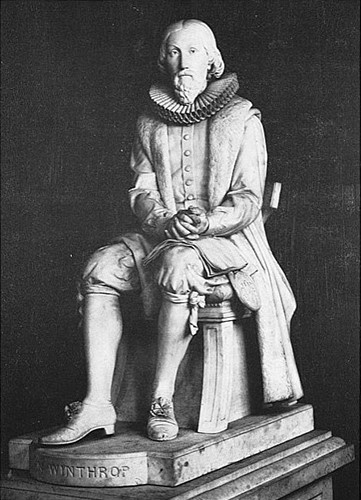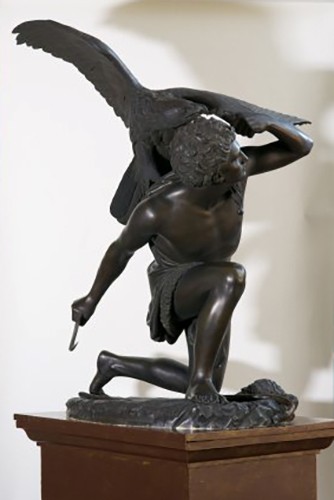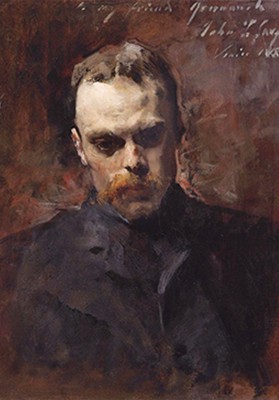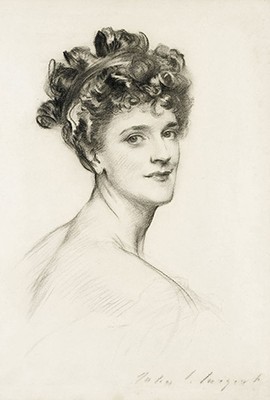Richard Saltonstall Greenough, 1819 – 1904
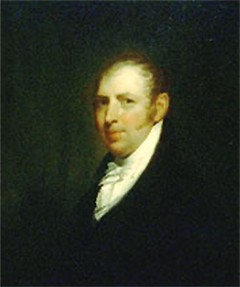
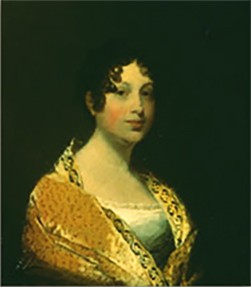
Richard Saltonstall Greenough was an American sculptor born on April 19, 1819 to David Greenough and Elisabeth Bender Greenough. Richard was the youngest of four sons, all of whom became artists. John Greenough (1801–1852) was a portrait and landscape painter; Horatio Greenough (1805–1852) became a renowned Neoclassical sculptor; and Henry Greenough (1807–1883) was best known for his work as an architect. According to Wright, six of the nine children spent much of their life in Europe:
[…] and several of their descendants married Europeans and only visited the United States. These generations of the family were chiefly distinguished by their possession of an artistic talent which had not been manifest before and which motivated the initial migrations among them. John and Horatio, the eldest sons of David, went abroad in 1824 and 1825, the one to London and the other to Rome, to prepare themselves for careers in painting and in sculpture. In 1828 Horatio settled in Florence, where he lived for the most part until 1851, the year before his death. He was, if anyone can be said to have been, the founder of the American colony in Florence and the establisher of the tradition of Italian study for American artists. Another son in this generation, Henry, an architect and occasional painter, studied in Florence early in the 1830's and visited there in later decades” (338-339).
Richard attended the prestigious Boston Latin School from 1829 – 1835 and, though his brothers graduated from Harvard, he did not enroll in a university. Rather, when he turned 17, he was sent to study under his brother Horatio in Florence, Italy. After a few months, he fell ill and returned to Boston, where he set up a sculpture studio in 1839 and modeled portrait busts and statuettes. Ultimately, Richard, like his siblings, would spent most of his life between Europe and the United States. He stayed the longest in Rome, where he died at age 85 in 1904.
The Greenoughs were the quintessential expatriates of the American colonies in both Italy and France. Their lives and experiences provided a backdrop for the writings of Henry James, whose associations with the “Greenough circle”: “were, in fact, vitally connected with his whole poignant discovery of Italy during his first years abroad and with the deep feeling he had for this country all his life. Their influence on his art was thus doubly assured” (Writght 341).
Richard married fellow New Englander Sarah Dana Loring in 1846 and they raised two children, Gordon and Nina. A novelist and poet specializing in biographies and tales of horror and fantasy, Sarah Loring often wrote under the name of her husband. The couple moved to Italy in 1848, where she became a member of the Royal Academy of Santa Cecilia. They traveled extensively throughout Europe and North Africa, and Richard "[...] devoted himself to the trade in portrait busts commissioned by traveling Americans" (Brumbaugh, 1963 63).
After a stint in Boston in the early 1850s, Richard and Sarah traveled through Europe in 1854 and settled in Paris from 1855 to 1875, where Richard’s studio catered to members of the American colony. "Richard Saltonstall Greenough was one of the first American sculptors to live in Paris [...], he was the first to exhibit at the Salon, and he was in the vanguard of the expatriates’ shift of focus to that city" (Gordon). According to the Musée d'Orsay's database on the Paris salons, Greenough exhibited:
- In 1855, a marble sculpture, “Jeune berger attaqué par un aigle,” at the Palais des Beaux Arts (catalogue entry). When he was in Boston, he had cast this same sculpture in bronze in 1853. It is now at the Boston Athenaeum, and is titled in English, "Shepherd Boy and Eagle."
- In 1859, two sculptures at the Palais des Champs Elysée: “L’indien poursuivi par la civilization,” a plaster statuette, and “Washington,” an equestrian statue in plaster, which is owned by the Louvre (catalogue entry).
- In 1863, a marble bust, “Portrait de M. Motley, ambassadeur des États-Unis auprès de la Cour de Vienne,” at the Palais des Champs Elysée (catalogue entry).
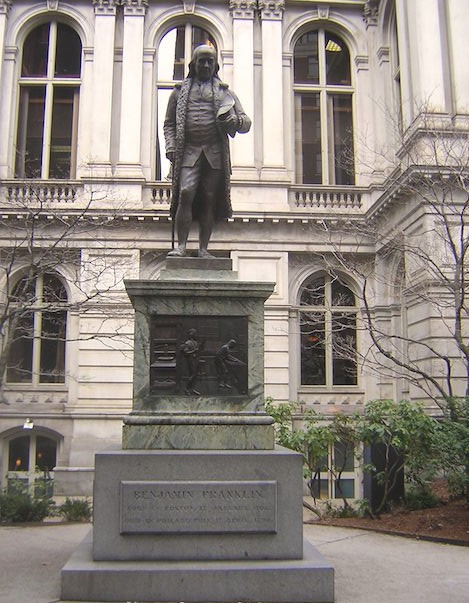
His best-known work is a monument representing Benjamin Franklin, the first portrait statue to be erected in Boston. On its square pedestal, designed by his brother Henry, there are bas-relief scenes of Franklin's accomplishments: the front and rear panels were executed by Greenough; the side panels were executed by sculptor Thomas Ball (cast between ca. 1856 and 1857). The eight-foot bronze sculpture, which was funded by public subscription, was cast in 1855 and unveiled in 1856 in front of Bullfinch's Court House in commemoration of the sesquicentennial of Franklin's birth. In 1865, it was rededicated in front of Old City Hall, on the site where Boston's Latin School once stood. After being knocked down by high winds in May 2016, the monument was painstakingly restored by Daedalus Inc., a fine arts conservation firm in Watertown, MA, and was ceremonially returned to its pedestal in September 2016.
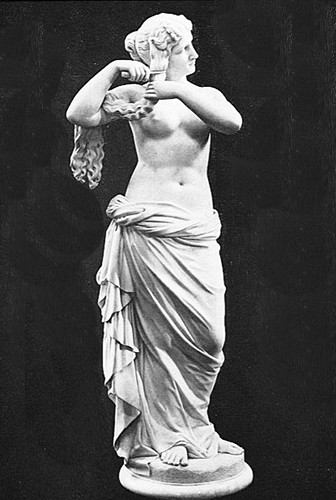
Although he was often overshadowed by his older brother Horatio, Richard was an accomplished artist in his own right. His sculptures grace such august institutions as the Brooklyn Museum (bust of Mary Magdalene done between 1860-1880), Harvard University (marble busts of John Winthrop, 1856, George Hayward, 1860, in Harvard's Memorial Hall), the United States Capitol (marble bust of John Winthrop, 1876), the Boston Athenaeum (Carthaginian Girl, 1863, Shepherd Boy), and the National Portrait Gallery (Bust of Atherton Blight, 1878). Nevertheless, when one compares the works of the two brothers, one can only agree with Brumbaugh’s assertion that “[…] the life of the older of these two men seems to flow into that of the other, and looking at the sculpture of Richard Greenough, logically continuing in the direction Horatio’s art had taken, one has the feeling that, perhaps, the older artist never died at mid-century, and that his real end did not come until 1904, after eighty years of activity under two different names” (1955 145).
As time passed, so did critical attention to Richard's work and he “[…] returned to waning years filled with busts and ideal heads of Elaines, Portias, Beatrices, and Joans, most of whom have ‘disappeared’ into private hands where no one pays any attention to them, evidently. Fortunately, however, unlike his brother, Richard Greenough seems to have signed much of his work, and thus, except for questionable early pieces, it can easily be identified when future art historians might seek it out” (Brumbaugh, 1963 74).
Richard's son Gordon carried on the family tradition, having studied under his father and at the École des Beaux-Arts, then under Gustave Boulanger and Jules-Joseph Lefebvre. He exhibited at the Paris Salon des artistes français: 1877, Portrait de Mlle A. d'A...; 1878, Portrait de M. ***; 1879, Etude; 1880, Portrait. The great American artist John Singer Sargent immortalized Gordon in an 1880 oil on canvas portrait and a charcoal sketch inscribed, "To my friend Greenough." According to Ormond and Kilmurray, Sargent began the sketch during a visit to the Curtis family at the Palazzo Barbaro, their house in Venice, in the summer of 1880 (91):
"He started [sketching] Greenough, and family tradition records that Greenough, who was suffering from a terminal illness, urged Sargent to finish the picture quickly if he wanted to finish it at all. Greenough died within days of its completion" (cited in Sotheby’s catalog).
Sargent also executed an undated charcoal sketch of Nina Greenough’s daughter (Richard's granddaughter), writer Alice (Lady) Lowther, whose beauty and vitality are immediately apparent.
Richard Greenough survived both of his children: Gordon died in 1880, shortly after his Sargent portrait was completed, and Nina shot herself in 1897, after battling with tuberculosis for over 15 years. Richard was buried in the Non-Catholic Cemetery in Rome, alongside such luminaries as John Keats, Percy Bysshe Shelley and William Wetmore Story.
How his exquisite marble portrait bust of an unnamed young woman found its way to 4 rue de Chevreuse is a mystery since there are no records tying Richard Greenough to Elisabeth Mills Reid or to the Girls' Art Club. The bust at Reid Hall is signed by Greenough and dated 1887, Rome. An earlier version of the sculpture (Paris, 1868) can be found in the collection of the Boston Athenaeum. Though Greenough's subject is unknown, it is believed to be an allegory of one of the virtues or, simply, an "Idealized Portrait of a Woman."
Sources
- Brumbaugh, Thomas Brendle. “Horatio and Richard Greenough: A Critical Study with a Catalogue of their Sculpture.” PhD dissertation, The Ohio State University, 1955. ProQuest.
- Brumbaugh, Thomas Brendle. “On Horatio and Richard Greenough: A Defense of Neoclassicism in America.” American Quarterly, vol. 12, no. 3, Autumn 1960, pp. 414–1.
- Brumbaugh, Thomas Brendle. “The Art of Richard Greenough.” Old-Time New England, vol. 53, no. 3, 1963, pp. 61–7. Digital Commonwealth
- Gordon, Ethelyn Adina. "Richard Saltonstall Greenough," Grove Art Online. Retrieved November 21, 2020.
- Ormond, Richard and Elaine Kilmurray. John Singer Sargent: The Early Portraits, Complete Paintings, vol. 1, New Haven, Connecticut: Yale University Press, 1998, pp. 90-91, 245, illustrated in color p. 90, no. 85.
- Plaag, Eric. On the Waters of the Wissahickon: A History of Erdenheim Farm. University of South Carolina Press, 2015.
- Puech, Pierre-François and Bernard Puech. "Constance Fenimore Woolson bust by Richard Saltonstall Greenough," 2014.
- Salons 1673-1914 (database). Musée d'Orsay.
- Smithsonian Research Information Service, "Benjamin Franklin (sculpture)." Art Inventories Catalog.
- Sotheby’s. American Paintings, Drawings & Sculpure, December 2, 2010. Auction catalogue.
- Tuckerman, Henry T. A memorial of Horatio Greenough, consisting of a memoir, selections from his writings, and tributes to his genius. New York: G.P. Putman & Co., 1853. HathiTrust.
- Wright, Nathalia. “Henry James and the Greenough Data.” American Quarterly, vol. 10, no. 3, Autumn 1958, pp. 338-343.
